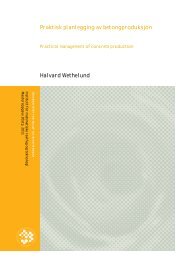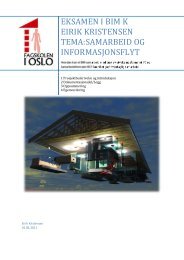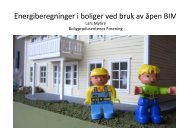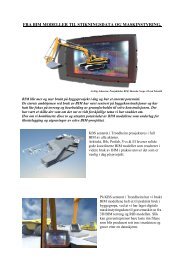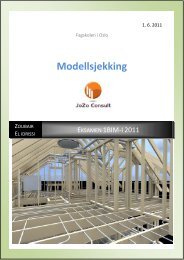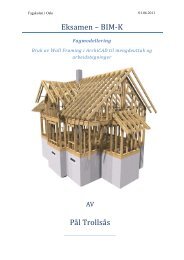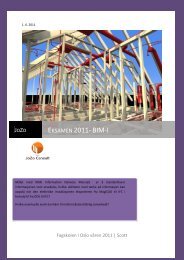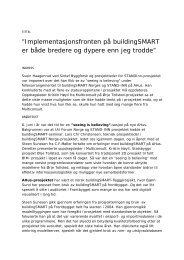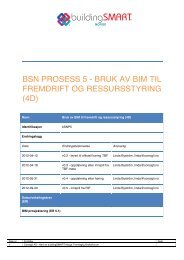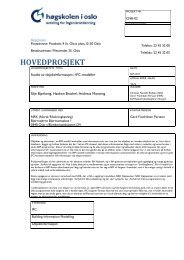optimalisering av stikningsdata fra 3d/bim modeller - buildingSMART
optimalisering av stikningsdata fra 3d/bim modeller - buildingSMART
optimalisering av stikningsdata fra 3d/bim modeller - buildingSMART
Create successful ePaper yourself
Turn your PDF publications into a flip-book with our unique Google optimized e-Paper software.
Optimalisering <strong>av</strong> <strong>stikningsdata</strong> <strong>fra</strong> 3D / BIM <strong>modeller</strong>______________________<br />
Abstract<br />
It becomes more and more common to use 3D/BIM models as basis for setting out in the<br />
construction industry. This is a relatively new procedure to retrieve setting out data. Much of<br />
the challenge lies in how the models are drawn/ designed by the architect/ consultant.<br />
The reason for this task is a 3D model (3D DWG) that are not converted to line and point<br />
model. The model consists of solids, i.e. 3D objects that are not divided into lines. This<br />
means that the surveying engineer on the project must “draw up” all the lines again to be<br />
able to export this to the total station. The task will be to shed light on this issue and look at<br />
how the communication between the different parties going on.<br />
It has been tested retrieval of setting out data from two different programs; AutoCAD and<br />
Gemini Terreng og Entreprenør. This was carried out without additional modules from other<br />
companies who h<strong>av</strong>e developed this. Testing shows that it is possible to do this in an<br />
efficient manner.<br />
It is conducted interviews with selected persons in the industry for qualitative method in<br />
order to convey experiences and thoughts about the development of BIM in the<br />
construction industry. In the interviews the emphasis is on communication between the<br />
various actors and how important this is to streamline the industry.<br />
The thesis also looks closely at the consultation draft of the guide 138 from the Norwegian<br />
Public Roads Administration and the NCC’s new BIM strategy; VDC.<br />
The work with the thesis shows that it is possible to extract setting out data in an<br />
efficient manner. It is also concluded that it is more beneficial to invest in<br />
internal competence level than to purchase custom data sets for<br />
each project. Moreover, one can see that working towards<br />
a common BIM model will improve communication between the actors significantly.<br />
5



